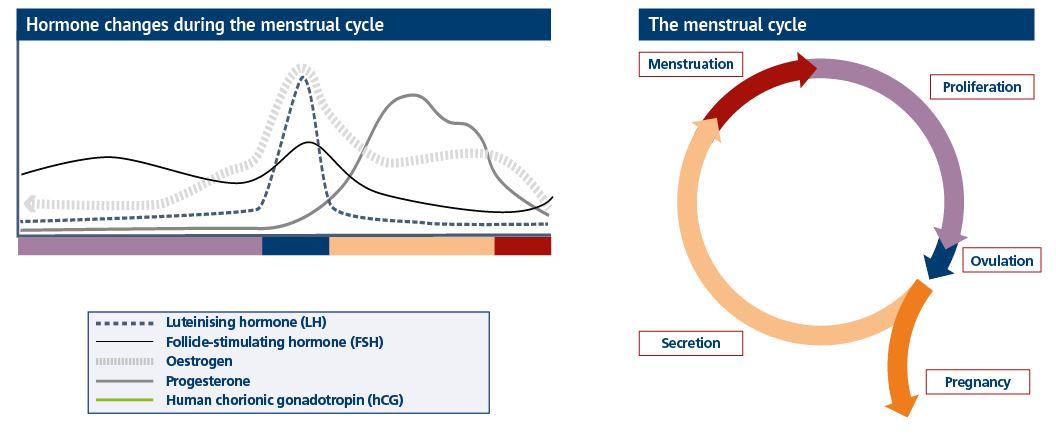Many people spend years trying to avoid pregnancy and then turn that focus completely on its head in the quest to have a baby. But this isn’t always a straightforward journey.
This module started by describing the anatomy of the female reproductive system. Hormones play a huge part in how it functions and the whole system is based around the menstrual cycle.

There are four stages in the menstrual cycle, which usually takes around 28 days, although this can vary between individuals.
Menstruation – days one to five:
Levels of follicle-stimulating hormone (FSH), luteinising hormone (LH), oestrogen and progesterone are all low, causing the lining of the uterus to deteriorate and be shed. Meanwhile, in the ovaries several eggs start to develop.
Proliferation – days five to 14:
FSH and LH levels start to rise, causing the lining of the uterus to grow. One egg develops more than the others and starts to release oestrogen, while the other eggs deteriorate.
Ovulation – around day 14:
FSH, LH and oestrogen peak, causing the egg to be released from the ovary. The uterine lining continues to develop.
Secretion – days 14-28:
FSH and LH levels decrease but the egg starts to release progesterone as well as oestrogen so these increase, causing the uterine lining to thicken further. If the egg is fertilised, it implants in the uterus, causing the release of human chorionic gonadotropin (hCG) – the hormone that is detected by a pregnancy test – otherwise it is discarded alongside the uterine lining and hormone levels fall.
